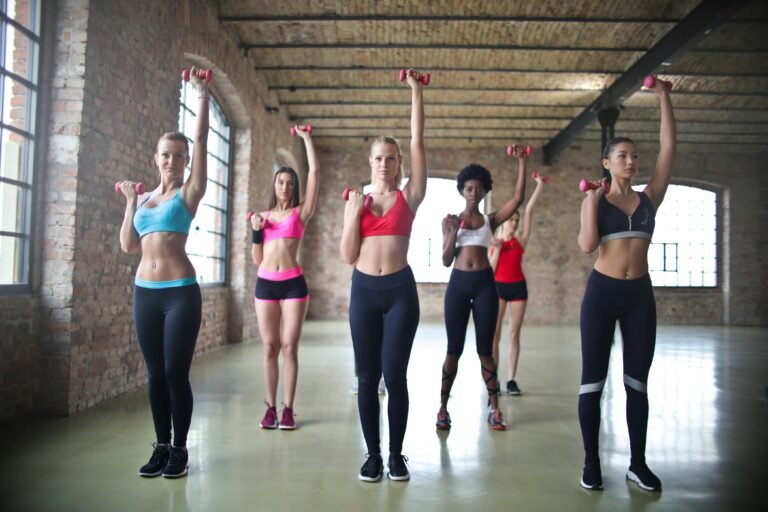The Future of Fitness: From CrossFit's Collapse to Sleep Tracking and Hybrid Workouts
The Modern Wisdom Podcast with Will Ahmed | August 14, 2015
Fitness isn’t just about movement anymore. It’s about recovery, sleep, community, and even personality. From the decline of CrossFit to the rise of hybrid training, run clubs, and fitness wearables like Whoop, the world of health and wellness is rapidly evolving. This blog post unpacks the trends, insights, and life lessons shared by Whoop founder Will Ahmed and Modern Wisdom host Chris Williamson — highlighting what truly defines the future of fitness.

CrossFit’s Rise and Fall: A Case Study in Community, Chaos, and Collapse
In the early 2010s, CrossFit was more than a workout—it was a lifestyle movement. Born from a simple email list, it grew into a global fitness empire with intense workouts, a passionate fan base, and its own lexicon of WODs (Workouts of the Day), AMRAPs, and box gyms. CrossFit took pride in being elite and hardcore, and for a time, that exclusivity made it wildly attractive.
However, behind the scenes, the company was plagued by internal dysfunction. Leadership scandals, including founder Greg Glassman’s controversial remarks during the Black Lives Matter movement, caused a massive credibility collapse. CrossFit lost sponsors, affiliates, and most importantly, the trust of its community.
Key Takeaway: A great brand and community can be resilient, but not indestructible. Leadership, adaptability, and public perception matter just as much as product quality.
Why Did CrossFit Lose Its Dominance?
- High Barrier to Entry: Olympic lifts, handstand walks, and high-intensity circuits can intimidate beginners.
- Injury Risks: CrossFit was notorious for injuries due to intensity, competition, and improper form.
- Poor Leadership: Scandals and tone-deaf responses during societal upheavals alienated even loyal fans.
- Lack of Evolution: The fitness world changed, but CrossFit largely stayed static in its approach.
Real-world example: Many former CrossFit enthusiasts now run in weekend 5Ks or join bootcamps that are more inclusive and less punishing.
The New Wave: Run Clubs, Hyrox, and Hybrid Fitness
With CrossFit fading, a new generation of fitness experiences emerged. At the forefront: run clubs, Hyrox competitions, and hybrid training that combines strength and endurance without the technical complexities.
Hyrox and the Fitness Democratization
Hyrox, a functional fitness race involving running interspersed with functional stations (like sled pushes or burpees), offers the challenge of CrossFit without the intimidating skill set. It’s scalable, inclusive, and ideal for the modern weekend warrior.
Run clubs have also surged, especially in urban centers. They’re casual, inclusive, and social. Think: joggers meeting at a coffee shop for a 5K and grabbing brunch after. No complex equipment, no coach yelling at you, just vibes and cardiovascular benefits.
Real-Life Example: In cities like Austin and London, run clubs have become hubs for professionals to meet, network, and even date — replacing the traditional bar scene with endorphin highs.
Fitness Trend Insight: The best fitness communities of today prioritize accessibility, camaraderie, and long-term sustainability.
Boutique Fitness and Micro Communities: The New Norm
From F45 to Orangetheory, Barry’s Bootcamp to hot Pilates, fitness has become tribal. These boutique studios cater to niche crowds and offer specialized experiences that traditional gyms can’t replicate.
What makes them stick?
- Tribe Identity: You’re not just a gym-goer, you’re an Orangetheory person.
- Social Interaction: Classes are often group-based, helping members bond.
- Habit Formation: Their structured formats and memberships encourage repeat attendance.
People are choosing these over traditional gyms not because of equipment but because of community, accountability, and energy. These studios have mastered the psychological side of exercise motivation.
Pro Tip: If you’re struggling to stay consistent with workouts, find a fitness tribe. The social accountability makes all the difference.
The Quiet Crisis: Why Sleep is the New Steps
One of the biggest insights from Whoop data? Only 22% of users get more than 7 hours of sleep per night. And most people overestimate how much they sleep by 1 to 1.5 hours.
Why Is Sleep a Bigger Priority Than Ever?
- Sleep affects recovery, focus, emotional regulation, metabolism, and longevity.
- Inconsistent sleep schedules (a.k.a. “social jet lag”) harm performance more than short duration.
- Quality sleep is more than time in bed — it’s about consistency, efficiency, and stress management.
You can’t pay off sleep debt on weekends,” says Ahmed. Regularity is what your circadian rhythm craves.
Whoop Global Sleep Insights
| Metric | Percentage or Time |
|---|---|
| Avg % sleeping < 7 hrs | 78% |
| Avg bedtime in Doha | 2:00 AM |
| Avg bedtime in Riyadh | 1:55 AM |
| US sleep worst nights | Friday & Saturday |
| Sleep consistency rate | Under 40% (global) |
If you want to be sharper, stronger, and live longer, your first step isn’t another workout — it’s fixing your bedtime.
Health Data Is the New Coach
Wearables like Whoop, Oura Ring, and Apple Watch are not just cool gadgets. They are personal performance labs on your wrist.
Whoop tracks:
- HRV (Heart Rate Variability)
- Sleep quality and duration
- Recovery and strain
- Stress levels
What makes Whoop unique is its focus on recovery. You don’t get a congratulatory badge for crushing a workout — you get warnings if your recovery is low.
We designed the product to disappear into the background,” Ahmed says. “You look at it when you need it.
Fitness is no longer a guessing game. It’s data-driven. The biggest shift? Understanding that rest is productive.
Global Trends: Fitness by Country
Whoop’s global dataset reveals fascinating cultural differences in fitness and lifestyle:
- Pickleball & Paddle are exploding in the U.S., Spain, and LATAM regions.
- Ireland tops alcohol consumption.
- Sweden leads in cold plunges.
- Finland is king of the sauna.
- Australia and U.S. report the most sexual activity.
- Middle East cities like Riyadh have the latest bedtimes in the world.
These patterns reflect how lifestyle, culture, and even climate influence fitness behaviors.
Top Fitness Trends (2023-2025)
| Trend | Growth Rating (1–10) | Popular Regions |
| Pickleball | 9.5 | USA |
| Paddle (Padel) | 9.0 | Europe, LATAM |
| Run Clubs | 8.5 | Global |
| Cold Plunging | 7.5 | Nordic Countries |
| Sleep Tracking | 10 | Global |
| Functional Fitness | 8.0 | US, UK, AU |
The Mental Side of Fitness: Obsession, Drive & Emotional Growth
Fitness culture is now merging with mental health and emotional intelligence. Top athletes and entrepreneurs alike are embracing tools like therapy, meditation, and breathwork.
Will Ahmed shared personal challenges, including the emotional impact of losing a close friend and delivering the eulogy. This life-shattering event expanded his emotional range and emphasized the importance of inner reflection.
Lesson: Pain is a portal to growth, but only if you feel it, not suppress it.
Whether it’s grief or the grind of entrepreneurship, emotional flexibility is as critical as physical resilience.
Self-Doubt, Failure, and Growth
You don’t fake it till you make it. You make it until you believe it.
Ahmed and Williamson both discuss how they battled self-doubt, especially in their twenties. While building Whoop, Ahmed faced endless rejections from investors and advisors. What kept him going? His conviction that Whoop deserved to exist, even if he doubted whether he was the person to build it.
This mindset shift — separating your identity from the outcome — is key.
Pro Tips to Overcome Doubt:
- Declare what you want (out loud, to others)
- Show up consistently, even when results lag
- Use rejection as information, not condemnation
Lessons in Entrepreneurship and Life
Some timeless life lessons from the conversation:
- Know what you want: This requires quiet. Pay attention to recurring thoughts.
- State it clearly: Don’t be vague. Declare your pursuit.
- Be consistent: Hard work without consistency is wasted energy.
- Manage rejection: Build emotional muscle by seeking feedback and hearing “no” often.
- Practice gratitude: Gratitude doesn’t mean complacency. It means presence.
- Sleep like a pro: Sleep is the edge you didn’t know you needed.
- Rest is a weapon: Especially if you’re an achiever, learn to recover.
Final Thought: The Future of Fitness Is Human-Centered
Fitness is no longer about six-packs and beach bodies. It’s about optimizing how you live, move, sleep, and connect with others. Whether you’re lifting in a boutique studio, joining a 5K run club, or tracking your HRV and sleep on Whoop — the future of fitness is informed, compassionate, and personal.
And maybe, that’s the healthiest thing of all.
Related Post



